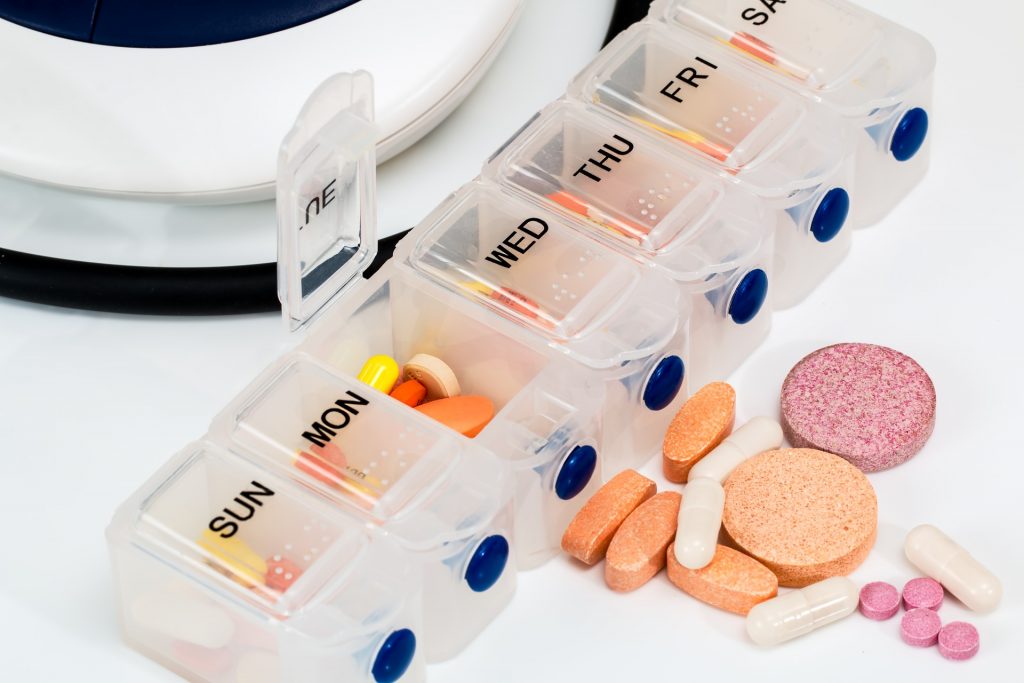Metformin Alone or Combined with Insulin Does Not Improve or Preserve Beta-Cell Function in Youth with Impaired Glucose Tolerance or Newly Diagnosed Type 2 Diabetes
Restoring Insulin Secretion (RISE) Pediatric Medication Study shows that youth have markedly reduced insulin sensitivity and respond differently to medicationsÂ
 Orlando, Florida – June 25, 2018 — According to recent research, the insulin resistance and pancreatic beta-cell (β-cell) dysfunction associated with type 2 diabetes (T2D) was unresponsive to treatment with metformin alone or metformin combined with insulin glargine in youth with impaired glucose tolerance (IGT), which is an element of prediabetes, or early T2D. Additionally, youth with IGT and T2D, compared to adults, are more insulin resistant, and thus their insulin is less effective in lowering blood glucose levels in their bodies. These findings from the Restoring Insulin Secretion (RISE) program’s Pediatric Medication Study were presented today at the American Diabetes Association’s® (ADA’s) 78th Scientific Sessions® at the Orange County Convention Center.
Orlando, Florida – June 25, 2018 — According to recent research, the insulin resistance and pancreatic beta-cell (β-cell) dysfunction associated with type 2 diabetes (T2D) was unresponsive to treatment with metformin alone or metformin combined with insulin glargine in youth with impaired glucose tolerance (IGT), which is an element of prediabetes, or early T2D. Additionally, youth with IGT and T2D, compared to adults, are more insulin resistant, and thus their insulin is less effective in lowering blood glucose levels in their bodies. These findings from the Restoring Insulin Secretion (RISE) program’s Pediatric Medication Study were presented today at the American Diabetes Association’s® (ADA’s) 78th Scientific Sessions® at the Orange County Convention Center.
T2D is increasing in prevalence in youth and adults in the U.S., and increases the risk of early morbidity and mortality, as well as long-term complications. T2D and its precursor, prediabetes, are characterized by insulin resistance and beta-cell dysfunction in youth and adults, and prediabetes includes IGT. However, research has suggested that T2D in youth might represent a more severe and rapidly progressive condition than in adults.
Given the increased recognition of the critical role of pancreatic β-cell function (β-cells store and release insulin in the body) in the pathogenesis of T2D, research efforts have begun to focus on prevention of the loss of insulin secretion among individuals at high risk for T2D or in early stages of the disease. The RISE program consists of three randomized, multi-center studies across the U.S. The trials focus on youth and adults to assess the impact of different interventions at the stage of IGT or shortly after the diagnosis of T2D to determine if the β-cell decline observed in IGT and early T2D could be halted or reversed.
Baseline data comparing youth and adults as well as results of one of the RISE studies, the RISE Pediatric Medication Study, will be featured in three articles published online simultaneously with today’s Symposium and in the August 2018 issue of Diabetes Care.
Baseline data for the trial was obtained from two adult arms of the study and was compared to youth. Both age groups had IGT and recently diagnosed T2D. The assessments used two different evaluation methods: the hyperglycemic clamp and the oral glucose tolerance test (OGTT). These two tests were both performed in 66 youth, ages 10-19 (80.3 percent with IGT) and 355 adults (70.7 percent with IGT). The results from both tests showed that youth have markedly lower insulin sensitivity compared to adults. In response, the insulin release by the pancreas in youth was much higher than in adults. However, the increased β-cell responsiveness in youth was still not enough to maintain normal glucose levels, indicating impaired β-cell function.
In the “Metabolic Contrasts Between Youth and Adults With Impaired Glucose Tolerance or Recently Diagnosed Type 2 Diabetes: I. Observations Using the Hyperglycemic Clamp,†article, the RISE researchers compared insulin sensitivity and β-cell responses in youth versus adults with IGT or recently diagnosed T2D using a hyperglycemic clamp. During a hyperglycemic clamp, researchers raise a subject’s glucose concentration above optimal level by administering an intravenous infusion of glucose. The desired high blood glucose concentration is maintained by adjusting the glucose infusion amount. This test enables researchers to then assess how well the pancreas can secrete insulin in response to glucose and how well the body responds to the insulin it secretes. Following a 10-hour overnight fast, a two-step hyperglycemic clamp was performed on each patient.
The youth had lower insulin sensitivity, hyper-responsive β-cells and reduced insulin clearance compared with adults. Insulin sensitivity in youth was 46 percent lower than in the comparably overweight, dysglycemic adults. The RISE researchers note that it remains to be determined if age-related differences contribute to declining β-cell function and/or impact responses to glucose-lowering interventions.
In the article, “Metabolic Contrasts Between Youth and Adults with Impaired Glucose Tolerance or Recently Diagnosed Type 2 Diabetes: II. Observations Using the Oral Glucose Tolerance Test,†the RISE Consortium performed a 3-hour OGTT. During the OGTT, participants had a baseline, fasting blood draw and then consumed a beverage containing glucose. Blood draws were then conducted at multiple time points over three hours to measure blood glucose and insulin concentrations. The results from the OGTT showed that the balance between insulin sensitivity and β-cell responses differs between youth and adults with IGT or recently diagnosed T2D. The findings are compatible with those observed with the hyperglycemic clamp and suggest that youth with every meal are having to release larger amounts of insulin to try and regulate their glucose metabolism.
Because metformin and insulin each have been shown to improve β-cell function in adults with IGT or recent-onset T2D, RISE researchers conducted the RISE Pediatric Medication Study in youth with IGT or recently diagnosed T2D. The study tested the effect of three months of insulin glargine titrated to lower glucose to well within the normal range (target fasting 4.4 – 5.0 mmol/L or 80 – 90 mg/dL), followed by metformin for nine months, versus 12 months of metformin alone. Between 2013 and 2016, a total of 91 youth between the ages of 10 and 19 years of age, and with a BMI of ≥85th percentile for their age and sex, participated in the study. Of the group, 60 percent of the youth had IGT and 40 percent had been diagnosed with T2D for a duration of less than six months.
The study results, detailed in the article, “Impact of Insulin and Metformin Versus Metformin Alone on β-Cell Function in Youth With Impaired Glucose Tolerance or Recently Diagnosed Type 2 Diabetes,â€Â revealed the insulin resistance and β-cell dysfunction seen in these youth with IGT or early T2D was unresponsive to both treatment regimens. No significant differences were observed between the treatment groups at baseline, 12 months, or 15 months in β-cell function, BMI percentile, HbA1c, fasting glucose, or oral glucose tolerance test 2-h glucose results. Additionally, three months after withdrawal of the intervention, the youths’ β-cells were even less responsive than when they started the study, indicating disease progression. Thus, the intervention did not appear to have any lasting benefit.
“These findings contrast with prior reports in adults, showing an improvement in β-cell function after 12 months of treatment with metformin or after insulin treatment, either for diabetes prevention or treatment,†said Kristen Nadeau, MD, MS, Professor of Pediatric Endocrinology at the University of Colorado Anschutz Medical Campus. “Early treatment of youth with IGT or type 2 diabetes may require other glucose-lowering medications alone or in combination to combat insulin resistance and arrest the progressive loss of β-cell function in youth. Additionally, the results of our study call for further studies to better understand the physiology of youth-onset type 2 diabetes and to identify new, safe and effective treatment options for youth with IGT or type 2 diabetes.â€
“Early β-cell failure creates permanent dependence on insulin, and thus, youth may be at higher risk of future diabetes complications,†said senior author Steven E. Kahn, MB, ChB, professor and Leonard L. Wright and Marjorie C. Wright Chair in the Division of Metabolism, Endocrinology and Nutrition, and Director of the Diabetes Research Center at the VA Puget Sound Health Care System and University of Washington School of Medicine in Seattle. “It is imperative that we create future research opportunities to allow us to better understand and prevent the underlying causes of rapid β-cell failure in youth, and to identify new treatment approaches for youth with IGT or type 2 diabetes.â€
To speak with Dr. Kahn or Dr. Nadeau, please contact the ADA Press Office on-site at the Orange County Convention Center on June 22 – 26, by phone at 407-685-4010 or by email at press@diabetes.org.
The American Diabetes Association’s 78th Scientific Sessions, to be held June 22-26, 2018, at the Orange County Convention Center in Orlando, is the world’s largest scientific meeting focused on diabetes research, prevention and care. During the five-day meeting, more than 16,000 health care professionals from around the world will have exclusive access to more than 3,000 original diabetes research presentations, participate in provocative and engaging exchanges with leading diabetes experts, and can earn Continuing Medical Education (CME) or Continuing Education (CE) credits for educational sessions. The program is grouped into eight theme areas: Acute and Chronic Complications; Behavioral Medicine, Clinical Nutrition, Education and Exercise; Clinical Diabetes/Therapeutics; Epidemiology/Genetics; Immunology/Transplantation; Insulin Action/Molecular Metabolism; Integrated Physiology/Obesity; and Islet Biology/Insulin Secretion. Felicia Hill-Briggs, PhD, ABPP, President of Health Care and Education, will deliver her address, “The American Diabetes Association in the Era of Health Care Transformation,†on Saturday, June 23, and Jane E.B. Reusch, MD, President of Medicine and Science, will present her address, “24/7/365 – Lifetime with Diabetes,†on Sunday, June 24. In total, the 2018 Scientific Sessions includes 375 oral presentations; 2,117 poster presentations, including 47 moderated poster discussions; and 297 published-only abstracts. Join the Scientific Sessions conversation on social media using #2018ADA.
About the American Diabetes Association
Nearly half of American adults have diabetes or prediabetes; more than 30 million adults and children have diabetes; and every 21 seconds, another individual is diagnosed with diabetes in the U.S. Founded in 1940, the American Diabetes Association (ADA) is the nation’s leading voluntary health organization whose mission is to prevent and cure diabetes, and to improve the lives of all people affected by diabetes. The ADA drives discovery by funding research to treat, manage and prevent all types of diabetes, as well as to search for cures; raises voice to the urgency of the diabetes epidemic; and works to safeguard policies and programs that protect people with diabetes. In addition, the ADA supports people living with diabetes, those at risk of developing diabetes, and the health care professionals who serve them through information and programs that can improve health outcomes and quality of life. For more information, please call the ADA at 1-800-DIABETES (1-800-342-2383) or visit diabetes.org. Information from both of these sources is available in English and Spanish. Find us on Facebook (American Diabetes Association), Twitter (@AmDiabetesAssn) and Instagram (@AmDiabetesAssn)




